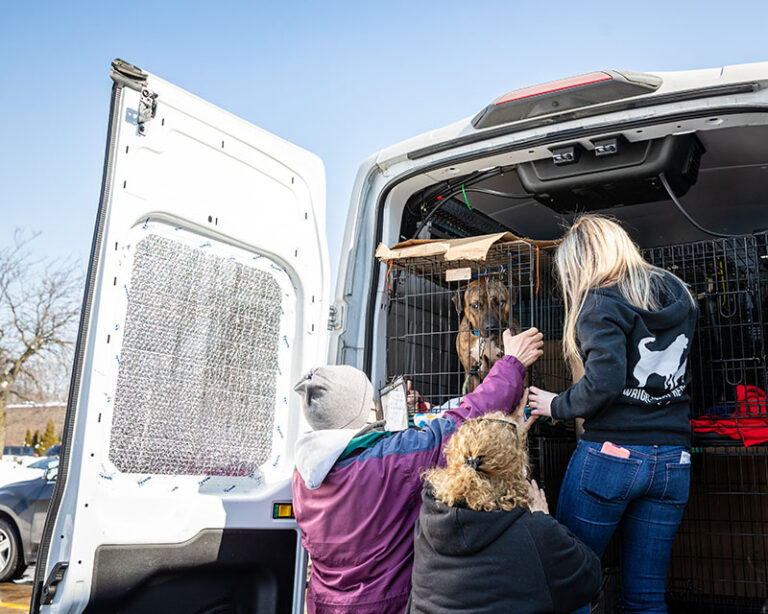Why are we still rounding up loose dogs and taking them to the shelter? The answer seems to be because it’s just how it’s been done—but now, thanks largely to new technology and good data, we know there’s a better way:
Keep most dogs in the neighborhood where they’re found, with shelters scanning for microchips and providing food, supplies, and other support.
This, not impoundment, is how we get lost pets back home—and free up resources for animal control agencies and animal shelters, to focus on animals who are dangerous or are in danger.
Science is on our side. Two recent, groundbreaking studies shed light on what dogs do when they leave home. The answer, in short, is not a whole lot. Just like the kids from the old Family Circus cartoons, it seems that dogs who get loose are mostly wandering around, remarkably close to their homes.

A 2019 study of San Antonio loose dogs found that a whopping 95 to 96 percent of stray dogs went home every night. And here’s a 2020 study out of Dallas, finding nearly half of stray dogs were a mere 400 feet from home and almost all were within a mile of their houses.
Anecdotal evidence supports the common-sense position that what’s true in San Antonio and Dallas is true in your community, too. Lost pets are generally not very far from home.
In the past, it made sense to have a central location—the shelter—where people could search for their lost pets. Today, when those who find lost pets can create “found” reports online and post photos to Craigslist, Nextdoor, Facebook, and other platforms, bringing pets to the shelter so the owner can find them should be a thing of the past.
Some communities are adapting the way they manage stray and lost dogs, with great success. Take, for example, Cabot Animal Support Services, in Cabot, Arkansas. Director Mike Wheeler asks people who find loose pets to file a found report, hold the pet for 48 hours, and help get the pet home without them coming to the shelter.
The results of this practice are stunningly successful: 85 percent of lost pets who were held for 48 hours were returned home, as opposed to 26 percent of pets taken directly to the shelter.
This shelter was able to keep almost every pet out of the shelter and in their community just by asking people to help.
You can do it, too. When it comes to animal control, several Human Animal Support Services pilot cities are scanning pets for microchips and returning them without them being impounded.
This saves officers’ time, reduces stress on the dog, and most importantly, allows the officer to engage with the pet’s owner and determine if resources are needed to secure the dog’s fence to prevent them from getting out in the future. These organizations are often able to offer free or low cost spay and neuter services, vaccines, and microchips, as well as to find out what other help the owner may need.
The bottom line: Ask good Samaritans to hold friendly, healthy found dogs, and empower animal control officers to return dogs in the field.
We create safer, more humane communities, and more fiscally responsible animal services agencies, when we don’t unnecessarily bring dogs into the shelter.
Check out the Human Animal Support Services Lost Pet Reunification toolkit and the Field Services and Public Safety toolkit to learn how to implement these changes in your community.
Proactive Measures to Get More Lost Pets Home
Pet owners should be strongly encouraged to register microchips (regardless of manufacturer) with Michelson Found Animals for added protection. The better we explain how a microchip works and its importance, the more likely pet parents will be to use this important tool.
Also, every organization should be providing animal data to Petco Love Lost. Encouraging pet owners to utilize this technology in advance of a pet becoming lost can be transformative for pet reunification. While there are many tools, techniques and strategies, these are but two of the most important. Lastly, every organization should be insisting on external pet identification tags in conjunction with the two mentioned above. This triple-pronged approach has the potential to end the agony of losing a pet and never seeing it again.






